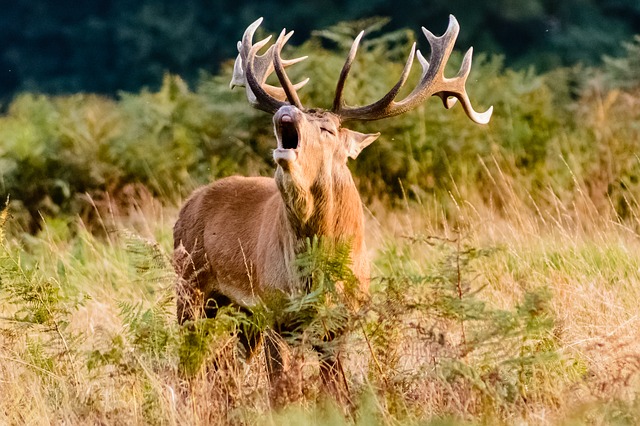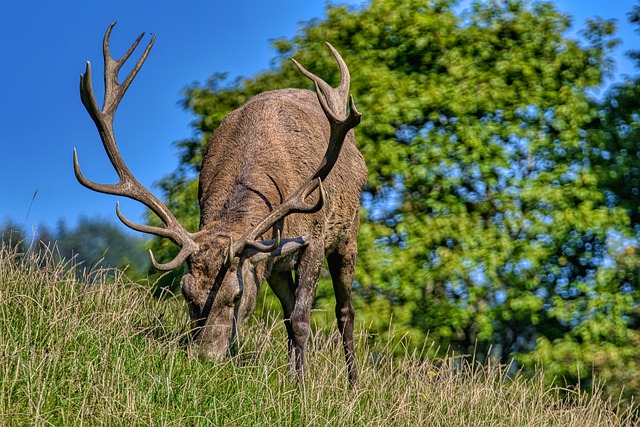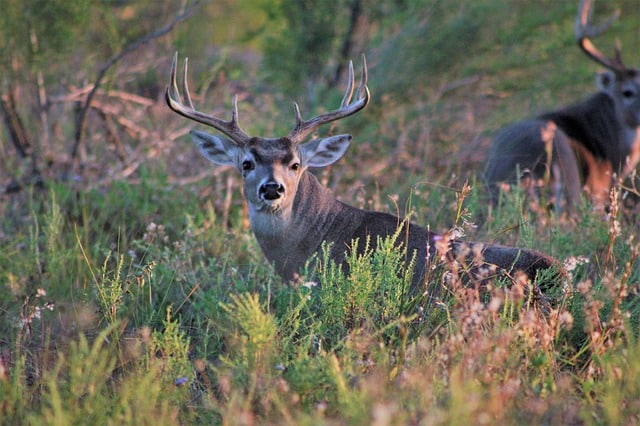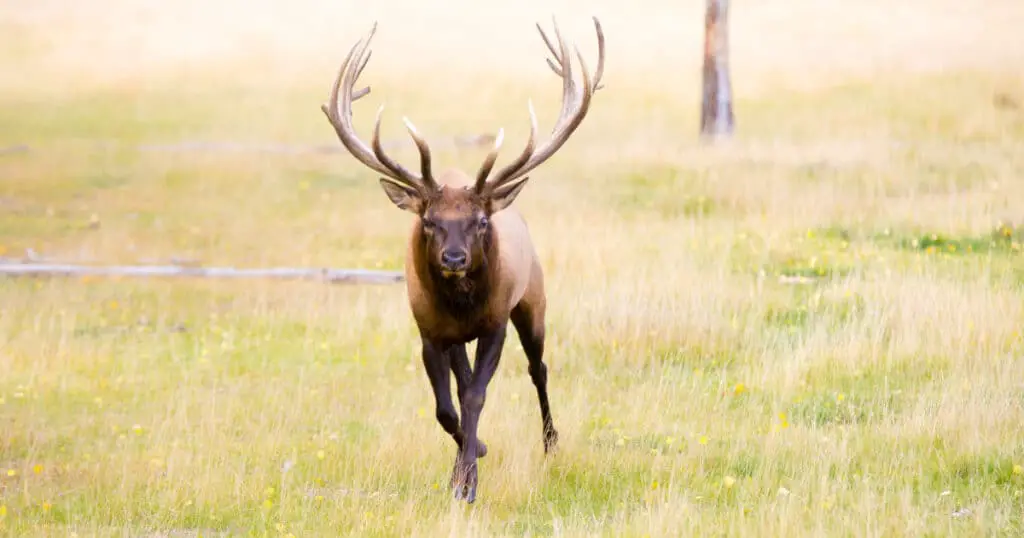Deer are known for their docile and gentle nature. When people hear the word deer, what comes to mind would probably be Bambi, from the Disney cartoon. They’re often described as graceful, playful, and friendly. To some, deer are considered trophies or prey during hunting season. Meanwhile, others see them as a symbol of strength and hope. But they are still wild animals, so you may be wondering … do deer attack humans?
Answered: Do Deer Attack Humans?
Sometimes. In their natural habitat, deer are not inherently aggressive. If they encounter hunters or other animals, they are likely to hide or flee in most situations. However, deer can also show aggressive behavior, especially when they are hurt, feel scared, or are threatened. They can also become aggressive during the rut, or mating season (usually the fall).

When Do Deer Attack Humans?
In the United States, statistics show that deer are the deadliest animals. They even cause more deaths than sharks. On average, around 120 Americans are killed annually by deer, though most of the deaths are due to vehicular accidents when deer run into or in front of cars.
That certainly doesn’t count as an attack, so let’s dig a little deeper.
The following are instances where deer attacks may happen:
When Protecting Their Young
Deer are protective of their babies or fawns. Female deer, or does, know that predators are alerted of their young’s presence when they are near.
To avoid attracting predators, a mother deer will hide their young and then search for food, which is why they prefer habitats with cover.
If fawns are alone, it doesn’t mean that they are abandoned, need help, or are safe to approach.
A female deer may potentially attack, especially when they are nearby and see an intruder bothering their fawn.
Since most female deer do not have antlers, they will fight using their hooves.
During The Rut (or mating season)
Male deer, or bucks, are aggressive and territorial during mating season.

Their urge to reproduce is so intense that many bucks don’t even feel the need to eat at this time of year.
Deer encounters should be avoided during the rutting season because bucks are continuously on the move. They do not like to be interfered with during mating activities.
Even when not provoked, bucks can attack anyone or any other animal that they perceive as their rivals with their strong kicks, sharp hooves, and antlers.
When They are Cornered
Deer have great speed and prefer to run rather than fight, but just like any other wild animal, when startled or if they have nowhere else to run, deer will defend themselves.
They may choose to attack when the threat is within striking distance, and they feel that a safe retreat is impossible.
How to Fend off Deer Attacks
Deer rarely attack humans.
But to reduce the likelihood of an unfavorable encounter with a deer, here are some measures one can take.
Prevention & Avoidance
If a deer is spotted while hiking, biking, hunting, or camping, slowly back away and leave the area. Do not alert it to your presence. Face the deer as you back away because if they should feel threatened, they are more likely to charge from behind.

Do not hunt or hike during the rut when deer are more skittish and aggressive. Rutting season usually is during the fall, from October through December.
Also, keep in mind that spring is fawning season and does are most protective of their young at this time of year. It is also ideal to keep away from does during spring.
Be Observant
Deer use different parts of their body to signal that they are ready to fight.
A deer that is aggressive and about to attack may show one or a combination of these signs as part of their body language.
- Their tail is tucked tightly against the rump.
- Head is held flat or slightly above the shoulders.
- It drops its ears, coupled with a stern look.
- Their head is held erect, ears forward towards the perceived threat.
- Nose is held upward to determine where the scent of the threat is coming from.
- Its eyes are laser-focused on the target, waiting for the slightest movement.
Do Not Panic
In case the deer charges, find the nearest climbable tree. Climb and stay up in the tree. Though it may take time, the deer may eventually lose interest and leave.

If there is no tree to climb, look for a boulder, tree trunk, or trail sign, which can serve as a shield against the deer.
If there is no nearby barrier or tree and an attack seems imminent, you can try to scare it off. Intimidate the deer by looking bigger than it is. While facing the deer, raise your arms while holding and swinging your jacket to appear larger and more formidable. Do this as a last resort, since it won’t guarantee scaring off the deer.
If all else fails, and the deer knocks you to the ground, curl into a fetal position to protect your head, neck, and the rest of your body. If possible, grab on to its antlers or legs to prevent succeeding hits.
While the deer may deliver a few blows, it will eventually leave if it sees you are no longer a threat.
What Injuries Can be Sustained in a Deer Attack?
While generally timid, when frightened, surprised, or provoked, deer can be vicious animals that can cause serious injuries.
Deer can attack humans under the right (or the wrong) circumstances.
When deer sense that they, or their young, are in danger, they can charge, kick, or stomp at anyone they perceive as a threat.
Deer antlers alone are a formidable opponent and may lead to bruising, puncture wounds, and skin lacerations. A deer’s hooves are equally dangerous, delivering blows to the torso, limbs, or upon the head, which can inflict permanent damage.
On rare occasions, deer attacks can be fatal or near-fatal.
An encounter with a real-life Bambi that intends to attack you is no Disney movie. While deer are magnificent creatures to look at, deer do attack humans and can be vicious and violent, so be aware of your surroundings, and give deer and other wild animals a wide berth.


